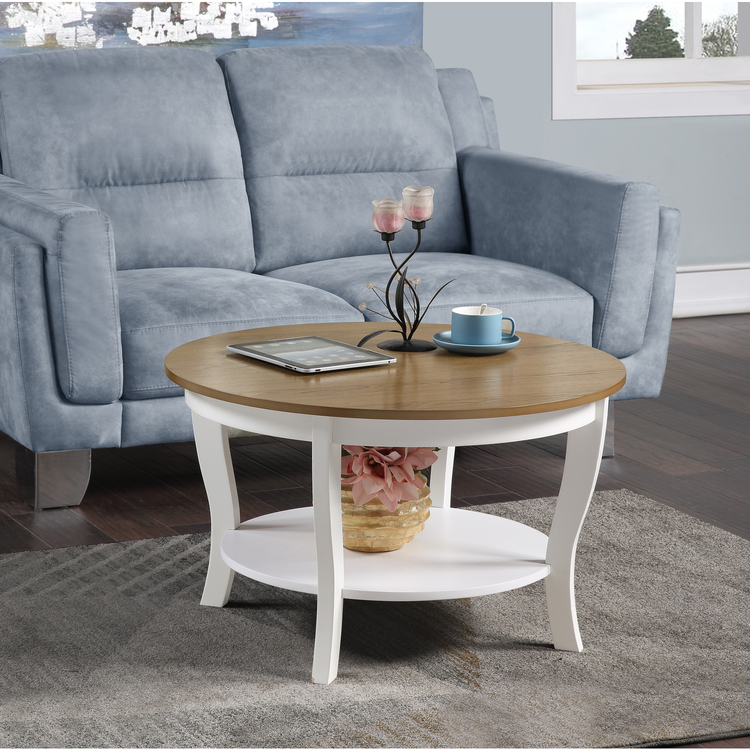
A coffee table can be the centerpiece of your living room, offering both style and functionality. However, making the wrong choice can affect the overall look and feel of your space. In this guide, we’ll explore common coffee table mistakes and how to avoid them, ensuring you create a well-designed, functional living area that’s both beautiful and practical.
1. Choosing the Wrong Size Coffee Table
Mistake: One of the most frequent mistakes is picking a coffee table that is too big or too small for the space. If your table dominates the room or feels like it’s out of place, it can throw off the balance of your seating area.
Solution:
Ensure your coffee table is proportional to the size of your sofa and the room. A general guideline is to leave about 16-18 inches between the edge of the sofa and the table, allowing for comfortable movement. Measure the space and aim for a coffee table that’s roughly two-thirds the length of your sofa to maintain balance.
2. Ignoring the Coffee Table Height
Mistake: Choosing a coffee table that’s too high or too low compared to your seating can make it uncomfortable to use.
Solution:
The ideal coffee table height is about 1-2 inches lower than the seat height of your sofa. If your sofa seat is 18 inches high, opt for a table that’s around 16-17 inches tall for a comfortable and ergonomic fit.
3. Overcrowding the Tabletop

Mistake: Overloading your coffee table with decor, books, remotes, and other items can make the space look cluttered.
Solution:
Aim for a balanced look by using a tray to group smaller items like remotes or candles. Keep the surface functional and visually appealing by sticking to a few key pieces like a stack of books or a decorative vase.
4. Failing to Consider Functionality
Mistake: Focusing only on the coffee table’s appearance may result in overlooking its practicality for your lifestyle.
Solution:
Think about how you plan to use your coffee table. Do you need extra storage? Look for designs with drawers or shelving. Choose durable materials like wood or metal if you have kids or pets, ensuring it remains practical and long-lasting.
5. Not Matching the Table to the Room’s Style

Mistake: Selecting a coffee table that doesn’t match your room’s decor can make the space feel disconnected.
Solution:
Choose a coffee table that complements the style of your room. For a modern space, opt for a sleek design with clean lines. In a rustic room, go for a distressed wood table with industrial details. Matching the table to the room enhances cohesion and flow.
6. Not Leaving Enough Walking Space

Mistake: Placing the coffee table too close to furniture like the sofa or chairs can restrict movement and create a cramped environment.
Solution:
Leave at least 24-30 inches of space between the coffee table and surrounding furniture for easy circulation. This makes the room feel open and comfortable.
7. Choosing the Wrong Shape
Mistake: The shape of your coffee table may not suit the room’s layout, making the space feel imbalanced.
Solution:
Consider your room and furniture arrangement. Rectangular tables work well in long rooms or with larger sofas, while round or square tables suit smaller spaces. The right shape helps unify the room’s design.
8. Forgetting About Material Durability
Mistake: Choosing a delicate material that’s prone to damage can cause frustration, especially in high-traffic areas.
Solution:
Opt for durable materials like wood or metal if your coffee table will see heavy use. While glass or marble may look elegant, they’re more likely to scratch or chip. Choose a material that can handle daily wear and tear.
By avoiding these common coffee table mistakes—such as choosing the wrong size, overcrowding the surface, or selecting an impractical material—you can create a living room that is both stylish and functional. Paying attention to these details ensures your coffee table enhances your living room design, balancing aesthetics and practicality.
Frequently Asked Questions
1. What are the key home decor trends for 2024?
The top trends include embracing natural materials like wood and stone, bold colors and graphic patterns, multifunctional spaces, biophilic design with indoor plants, and tech-integrated homes with smart features.
2. How are natural materials being used in home decor in 2024?
Natural materials such as wood, stone, linen, and wool are being used to create warmth and sustainability. These materials are often sustainably sourced and are popular in furniture, countertops, and textiles.
3. What colors are trending in 2024 home decor?
Bold and saturated hues like deep blues, forest greens, burnt oranges, and rich purples are trending in 2024. These colors are being used to create vibrant, energetic spaces that stand out.
4. How can I incorporate biophilic design into my home?
You can incorporate biophilic design by adding indoor plants, maximizing natural light with large windows or skylights, and integrating outdoor elements like gardens or terraces to blur the line between indoor and outdoor living.
5. What are some examples of tech-integrated home features in 2024?
Examples of tech-integrated home features include smart lighting, voice-activated systems, energy-efficient appliances, smart thermostats, and sustainable tech solutions like solar-powered lighting and water-saving devices.
Explore our Best Collection of Products in Coffee Table
Related Blogs

Transform Your Coffee Table: Aesthetic Living Room Decor Ideas
Discover how to elevate your living room with these aesthetic coffee table decor ideas. From natural elements to vintage charm, explore unique and stylish ways to enhance your space and make your coffee table a captivating centerpiece.

How to Choose the Right Coffee Table Size for Your Sectional?
Discover how to choose the perfect coffee table size for your sectional. Learn about ideal dimensions, height, and style tips to create a balanced and functional living space.

2024 Coffee Table Trends: What’s In and What’s Out
the top coffee table trends for 2024, from natural materials and curvy shapes to bold colors and multi-functional designs, while saying goodbye to traditional styles.









